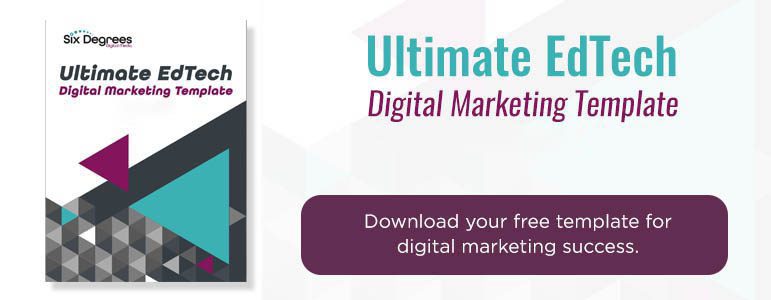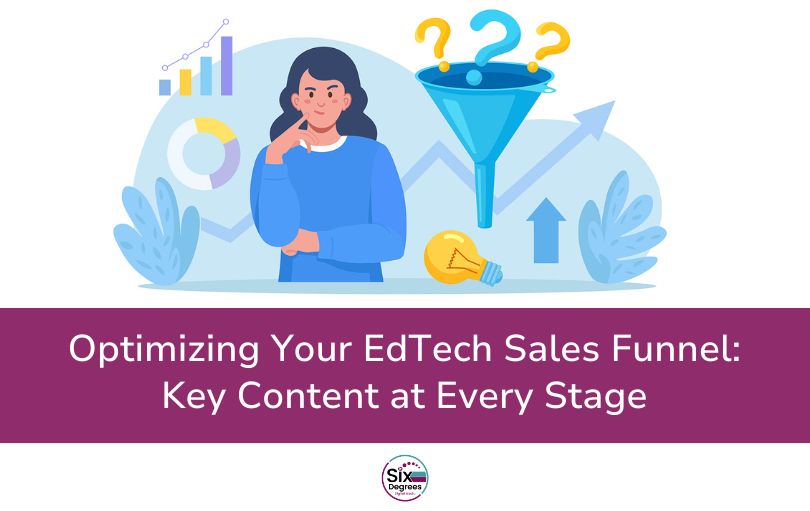The Role of Interactive Content
in EdTech Marketing
Breaking through the noise to capture the attention of busy EdTech decision-makers is no easy feat. With countless platforms vying for attention, EdTech companies face a unique challenge: how to communicate their product’s value quickly, memorably, and meaningfully. This is where interactive content steps in, offering a way to showcase benefits while creating a hands-on experience that keeps buyers engaged.
Interactive content—whether a self-guided demo or an ROI calculator—allows decision-makers to see a product’s features firsthand, visualize its impact, and easily share their findings with colleagues. This approach goes beyond basic features; it shows exactly how the product meets real needs, making it a powerful tool for organizations evaluating their options.
With interactive elements, EdTech brands have a chance to connect on a deeper level, offering decision-makers the value they need to make informed choices. Here’s a look at the interactive content formats that most effectively attract and engage EdTech buyers.
Using Quizzes to Understand Customer
Needs and Direct Interest
Quizzes provide EdTech buyers with a hands-on way to explore how well a product aligns with their specific needs and goals. A quiz titled “How To Discover the Right EdTech Solution for Your Needs” can guide decision-makers through questions that help them rank and weigh their priorities—such as ease of use, scalability, and support resources. This approach fosters transparency, ensuring that if your solution is a good fit, the quiz clearly indicates it; if not, it respects the prospect’s needs over a quick sale.
Alternatively, a more direct quiz titled “Is Our Solution Right for You?” functions like an interactive form. This style allows prospective customers to answer targeted questions that quickly reveal alignment, making it easy for them to assess fit without a lengthy consultation.
By creating value-first quizzes like these, EdTech companies don’t just facilitate informed decisions—they lay the groundwork for lasting trust and client satisfaction, leading to higher-quality engagements and, ultimately, happier customers.
Creating Self-Guided Demos for Convenient,
On-Demand Exploration
Self-guided demos are a powerful tool in EdTech marketing, allowing decision-makers to explore a product on their own time without the commitment of scheduling a formal demo. For busy administrators and directors, this low-barrier option provides both flexibility and convenience, making it a great starting point for product exploration.
Imagine a click-through tutorial that lets prospective clients walk through key product features step-by-step. For a more hands-on approach, an interactive walkthrough could showcase top functionalities, offering an in-depth look that goes beyond a typical static video. These formats are designed to highlight essential benefits and answer initial questions, creating a helpful introduction without the high pressure of a live demo.
One of the major advantages of self-guided demos is how easily they can be shared. Decision-makers can pass along the link to colleagues and stakeholders, enabling everyone to review it at their convenience and building broader internal buy-in. This approach allows each stakeholder to gain insights on their own time, paving the way for more productive follow-up discussions if interest continues.
Using Interactive Video, Presentations, and
Graphics for Shareable Product Previews
Interactive media—such as videos, clickable infographics, and dynamic presentations—can be incredibly effective for EdTech decision-makers who need a quick yet thorough grasp of product value. Unlike static content, these formats invite users to explore specific features or modules at their own pace, creating a personalized journey through the content that’s both visual and engaging.
For example, an interactive video with clickable chapters can break down feature demos, allowing viewers to jump to the areas that matter most to them. Or imagine a dynamic infographic that maps out product modules, with each clickable section revealing details about a specific feature or function. These interactive elements make the product’s value instantly clear and accessible, giving decision-makers the freedom to dive deep where it counts for them.
The beauty of these formats? They’re easily shareable. Busy administrators can send a link to other stakeholders who can review it at their convenience, making collaborative input easier without the hassle of coordinating schedules. This versatility is especially useful in EdTech, where various teams and departments often weigh in on purchasing decisions, making it easy to get everyone on the same page with minimal friction.
Building Trust with Custom ROI
Calculators and Budget Tools
For EdTech decision-makers facing tight budgets and high expectations, custom ROI calculators and budget tools offer an invaluable look at a product’s potential impact. These calculators allow prospective customers to input specific variables, such as school size, usage frequency, or program requirements, generating an estimate of the product’s financial and operational benefits. This isn’t just about numbers; it’s about showing real, tangible outcomes that can support purchasing decisions with clarity and confidence.
Imagine a scenario where an ROI calculator demonstrates how an EdTech tool could reduce workload, cut administrative costs, or boost learning outcomes. By providing an accessible, data-backed look at potential returns, the calculator can effectively address budget concerns while also adding weight to the value proposition. It’s a way for administrators and budget-conscious buyers to justify the investment, ensuring the product aligns with their financial goals.
The interactive nature of these tools makes them ideal for EdTech providers who want to build trust with potential clients. Rather than focusing solely on features, ROI calculators present a straightforward look at how a tool could positively impact resources, making the case for investment in concrete, relatable terms.
Maximize EdTech Impact with Interactive Content
In a competitive EdTech market, interactive content stands out as a strategic tool to engage decision-makers and simplify the evaluation process. From quizzes that help define priorities to self-guided demos and shareable interactive videos, each touchpoint provides a meaningful way to showcase your product’s value and relevance.
For EdTech providers, creating content that genuinely supports the decision-making journey builds trust and fosters interest. Tools like ROI calculators or engaging video walkthroughs give prospective buyers a hands-on way to assess fit and make informed decisions, ultimately laying the groundwork for productive partnerships.
Interested in exploring these approaches? Reach out to Six Degrees Digital Media to discover how interactive content can attract qualified leads and strengthen your EdTech brand’s connection with decision-makers.






